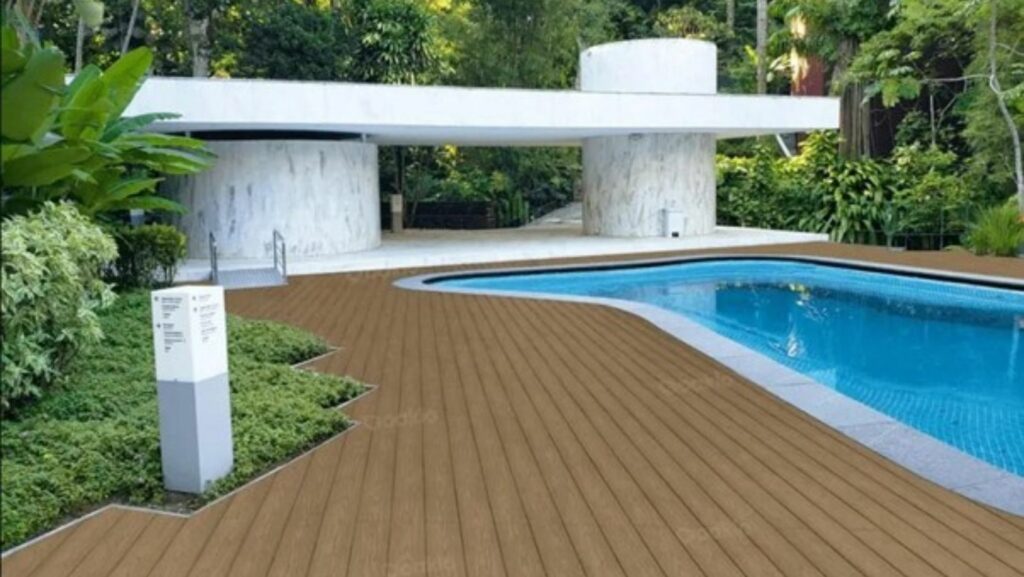When I think about outdoor spaces, I can’t help but notice how far decking materials have come. Technology has completely transformed composite decking, making it more durable, eco-friendly, and visually stunning than ever before. Gone are the days of constant maintenance and weather-worn wood—today’s options are built to last and look great while doing so.
In this article, I’ll discuss how technological advancements have reshaped outdoor composite decking. From innovative manufacturing processes to cutting-edge designs, you’ll discover why these modern materials are a game-changer for anyone looking to upgrade their outdoor living space.
Introduction to Composite Decking
Definition and Composition
Composite decking boards blend recycled wood fibers and plastics, often covered with a protective polymer cap to enhance durability. Manufacturers typically combine these materials through extrusion or compression molding to create resistant, low-maintenance planks.
I remember installing composite decking for a client who wanted to replace their old wood deck. Compared to the sanding and staining required for wood, the ease of handling prefinished boards saved time and simplified the process.
Eco-Friendly Nature
The manufacturing of composite decking minimizes waste by repurposing recycled materials. Many boards, for example, use high-density polyethylene sourced from plastic bottles. This approach reduces landfill contributions and conserves natural timber.
Some brands also focus on sustainable energy practices during production. For instance, certain facilities operate with renewable energy, lowering emissions tied to creating these materials.
Benefits of Composite Decking
Durability and Longevity
Composite decking boards last far longer than traditional wood, often up to 30 years or more. Their recycled wood fibers and plastic blend resists warping, rot, and insect damage.

I once replaced my old wood deck with composite decking, and it held up perfectly through severe weather, while nearby wood decks needed constant repair. The material’s strength makes it ideal for high-traffic areas or challenging climates.
Aesthetics
Modern composite decking boards come in a variety of colors and finishes. Options include designs that mimic natural wood grain or sleek contemporary styles. The boards resist fading by incorporating UV-resistant technology, maintaining vibrant colors for years. Integrated lighting can also boost visual appeal, creating cozy, functional spaces for evening use.
Maintenance Requirements
Composite decking boards are low-maintenance compared to wood. Cleaning usually involves a quick wash with soap and water without sanding or sealing. I saved work hours after switching to composite—scrubbing debris off after storms was effortless. This convenience makes composite a practical choice for those with busy schedules.
Environmental Impact
These boards use recycled materials, such as wood fibers and plastics, reducing waste and conserving resources. High-density polyethylene from discarded plastic bottles often serves as a primary component. Some manufacturers even decrease carbon emissions by using renewable energy during production. Composite decking balances performance with eco-conscious benefits.
How Technology Improves Outdoor Spaces with Composite Decking
Enhanced Comfort and Functionality
Composite decking boards combine innovative materials and smart designs to create more livable outdoor spaces. Made from durable composites, these boards resist extreme weather while staying cooler underfoot than concrete. I noticed this difference after switching my backyard deck; walking barefoot during summer became far more pleasant.
Advancements like integrated lighting systems and automated shades enhance functionality. Weather-resistant entertainment features such as mounted speakers or outdoor TVs extend usability. These upgrades make outdoor areas perfect for hosting or relaxing.
Increased Property Value
Installing composite decking boards can boost a property’s value. With low-maintenance needs and a lifespan of up to 30 years, buyers view them as a long-term investment.

Modern designs replicate wood aesthetics, adding to curb appeal while offering eco-friendly benefits through recycled materials. During a recent valuation of my home, the appraiser mentioned that high-quality composite decking significantly increased its marketability. Reliable durability and style improvements make decks attractive features for buyers.
Future Trends in Composite Decking
Emerging technologies are revolutionizing the design and use of composite decking boards. I once installed decking for a friend, and multi-width boards allowed us to create a more dynamic, custom look without extra cost. Trends like hollow-core boards enhance thermal performance while reducing material usage.
Innovative railing systems, like topless glass rails, are gaining traction for their safety and unobstructed views. Boards that offset more CO2 than their production emits represent a shift toward carbon-negative solutions addressing climate concerns. Updated surface finishes also replicate woodgrain more convincingly, boosting curb appeal.
Conclusion
I recently replaced my old wooden deck with composite decking boards; the difference has been striking. The boards resist fading and warping, even during harsh winters, saving me time on yearly maintenance. They’re also cooler underfoot on hot days, making outdoor lounging much more enjoyable.

